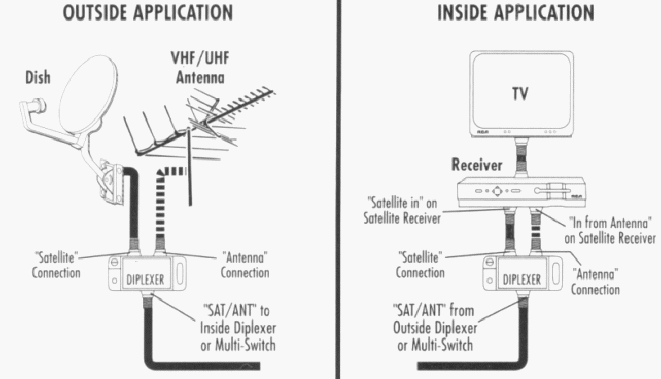I get excellent results combining my CS6000 satellite receiver output with our cable tv using a frequency agile rf modulator and a Next Generation Remote Extender (these are not too expensive and are available from Satellite AV and/or Sadoun or other sponsors). The satellite receiver is located near where the cable tv comes into the house. I plug the composite video and left/right RCA audio outputs from the satellite receiver into the frequency agile rf modulator (in my case set to channel 86). I use a simple splitter/mixer to combine the rf modulator output and the incoming cable tv signal. The combined signal then goes to the existing cable tv amplifier/splitter and sends all signals through the house. The Next Generation remote extender is a very clever device that uses a module that replaces an AA or AAA battery in any remote control. The remote control commands are thereby transmitted to its receiving unit that is located near the satellite receiver. With this setup, I can watch cable tv as it was before, but if I tune to channel 86, I can watch whatever channel I have selected on the satellite receiver. I just carry the satellite remote control to whatever tv I'm watching - the remote control signal carries far and the rechargable battery in the sending unit lasts for weeks (an extra battery is included and is kept charged for quick replacement). The Next Generation remote extender is nice because the sending unit is contained inside the remote control - it does not use a separate transmitter. Therefore, you can just carry the satellite remote control around the house. Of course, with this set up, only the selected satellite channel is available on all tvs. On the one tv we have with an HD box, I have a splitter to separate the incoming cable - one to the cable HD box and one to a separate input on the tv. To watch cable, just select the cable box input - to watch satellite, just select the other tv input and tune to 86. The remote extender allows you to do anything that you would do with the standard IR remote, but you can do it from anywhere in the house and don't have to be near the sat receiver. Be aware, however, that it can be difficult to find an open cable channel without causing some interference to the cable tv channels or vice versa. I had to change the modulator output channel once because the cable company apparently added some signals or shifted some around. Once you do find a clear channel, the picture quality is identical to a direct hook up to the sat receiver. (However, my particular modulator outputs in mono rather than stereo).


